The Po delta is a cradle of nature and civilization on the border between Veneto and Emilia-Romagna. The Po delta is a symbol like few others of how close the relationship between the environment and man can be and how one can shape the other in its own image and vice versa. The Po Delta, which not coincidentally has been on UNESCO’s World Heritage List since 1999, is a melting pot of millennia-old history and traditions that stretches for nearly 200 square kilometers and attracts many visitors every year. Protected by two regional parks, the Po Delta is a great green oasis shaped by water and the constant work of man. It is no coincidence that, despite being one of the most anthropized and economically developed protected areas in Italy, the Po Delta area preserves within it the largest Italian extension of protected wetlands, as well as villages and towns rich in real artistic and architectural treasures. Here are the 10 must-see stops on your trip to the Po Delta
Little Venice is located just 50 kilometers from Ferrara and just over three from the sea. Comacchio is a lagoon town that can be considered the capital of the Po delta. Comacchio’s entire history revolves around the relationship between man, land and water. Today Comacchio is a popular tourist destination suitable for all tastes. In Comacchio one can relax at one of its many lidos or go exploring its famous valleys on foot or by bicycle, but it is then the whole town that offers evocative corners, all to be discovered. The ancient Hospital of the Infirm, the Cathedral, Palazzo Bellini, Trepponti, the sanctuary of Santa Maria, and the ancient Manifattura dei Marinati are just of the many places not to be missed on your tour to discover Comacchio.
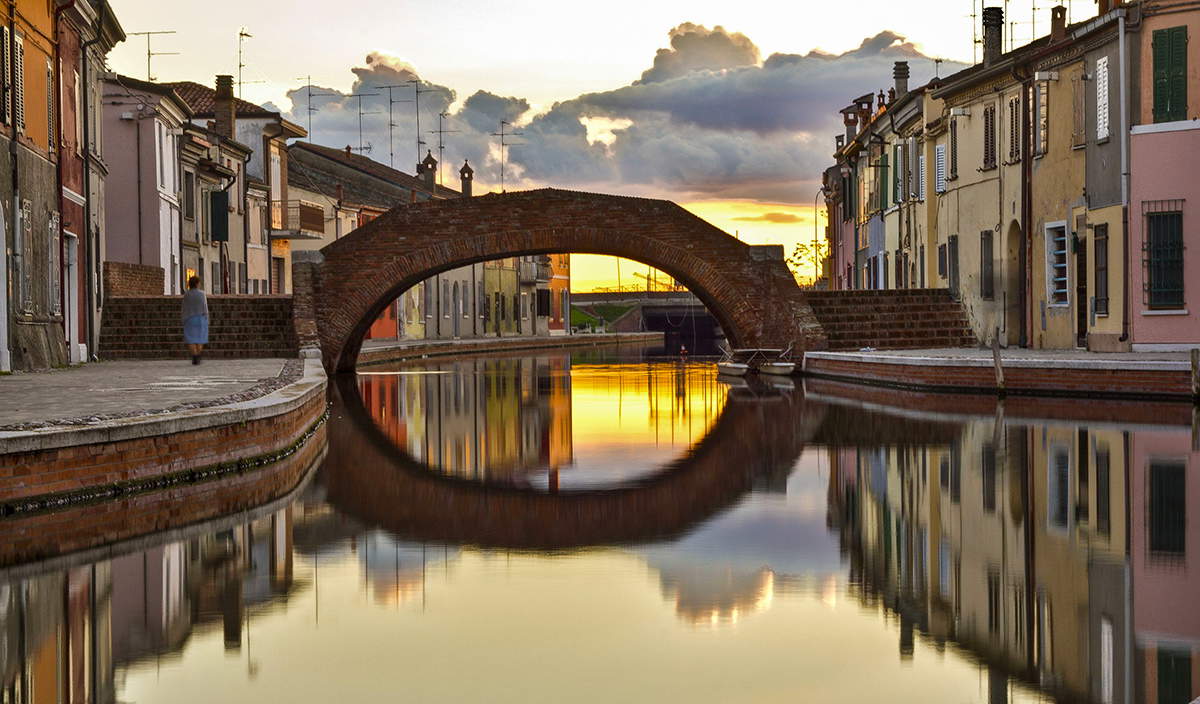
Inside the eighteenth-century Ospedale degli Infermi is the Museum of the Ancient Delta of Comacchio, which houses numerous artifacts collected from all over the territory and testifying to its events from prehistory to the Middle Ages. The entire museum, moreover, is conceived as a large container of all the traces that tell of the centrality of these places as a junction between the Adriatic, and therefore the Mediterranean, and continental Europe. Exhibit after exhibit will thus be able to take a journey from the birth of the Po Valley to the Middle Ages via the Etruscan city of Spina, to the Roman world, with its incredible cargo of a perfectly preserved ship, and the birth of Comacchio, which has long rivaled Venice.
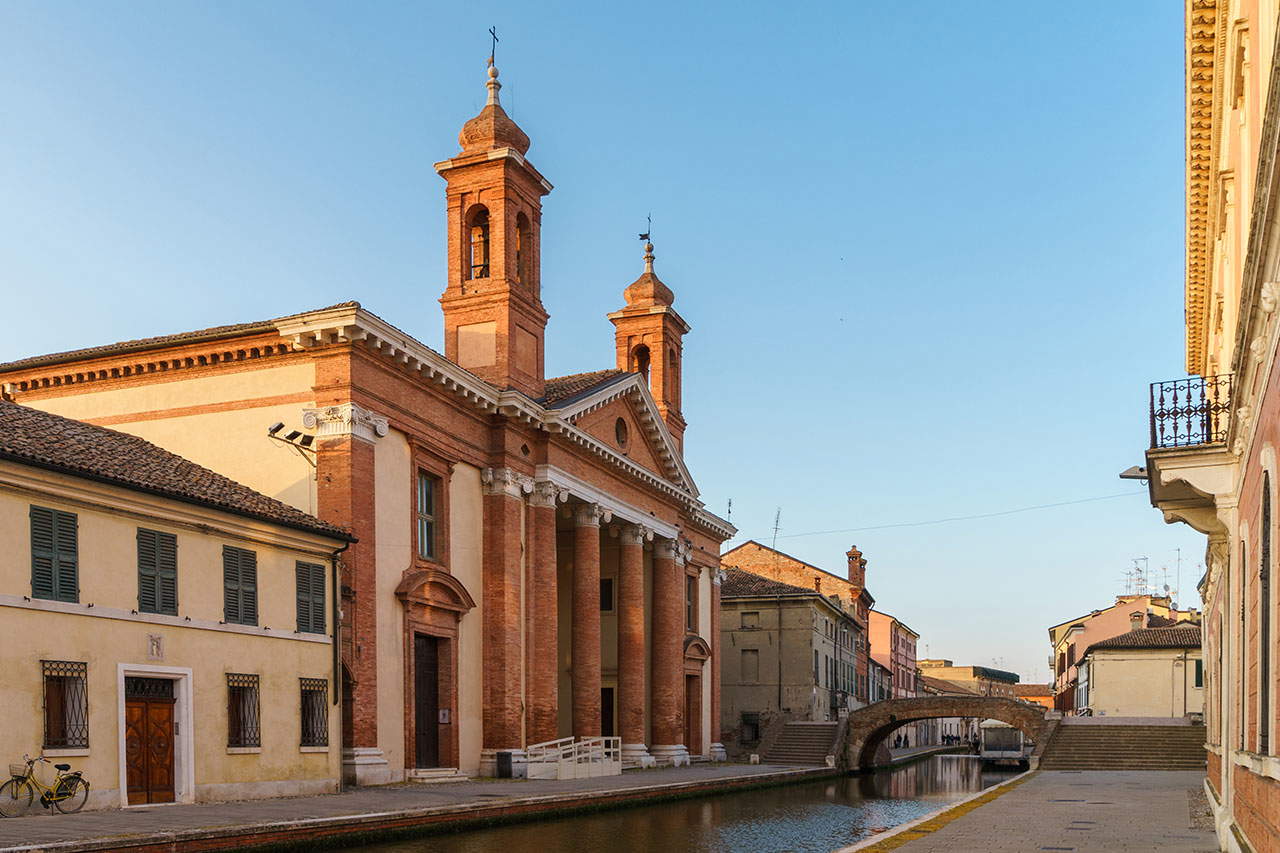
Majestic and imposing, the Comacchio Cathedral, dedicated to San Cassiano, stands with its unique profile in the center of Piazza XX Settembre. The present building dates back to the 18th century and is notable for its size, which appears almost out of scale with the houses and buildings that surround it. With its brick facade in which Istrian stone capitals, plinths and cornice stand out, it is impossible not to be impressed by its unmistakable profile. The interior consists of a single nave with a series of side chapels, and what especially catches the eye is the dramatic marble altar. Also unmistakable is the large bell tower, one of the most recognizable symbols of all Comacchio.

The origins of the abbey should be traced back to the 6th-7th centuries when a Benedictine settlement arose in the center of what was the island of Pomposa, in the middle of two branches of the Po delta. Pomposa Abbey is now in the municipality of Codigoro, 50 kilometers from Ferrara and 20 from Comacchio. Over the centuries, the Pomposa monastery has seen many illustrious people pass through and stay here for long periods of time. Today the tour includes the bell tower, the cloister with all the adjoining rooms, the Palazzo della Ragione, and the splendid church of Santa Maria. Inside is a magnificent cycle of Giotto-inspired frescoes and a splendid mosaic floor.
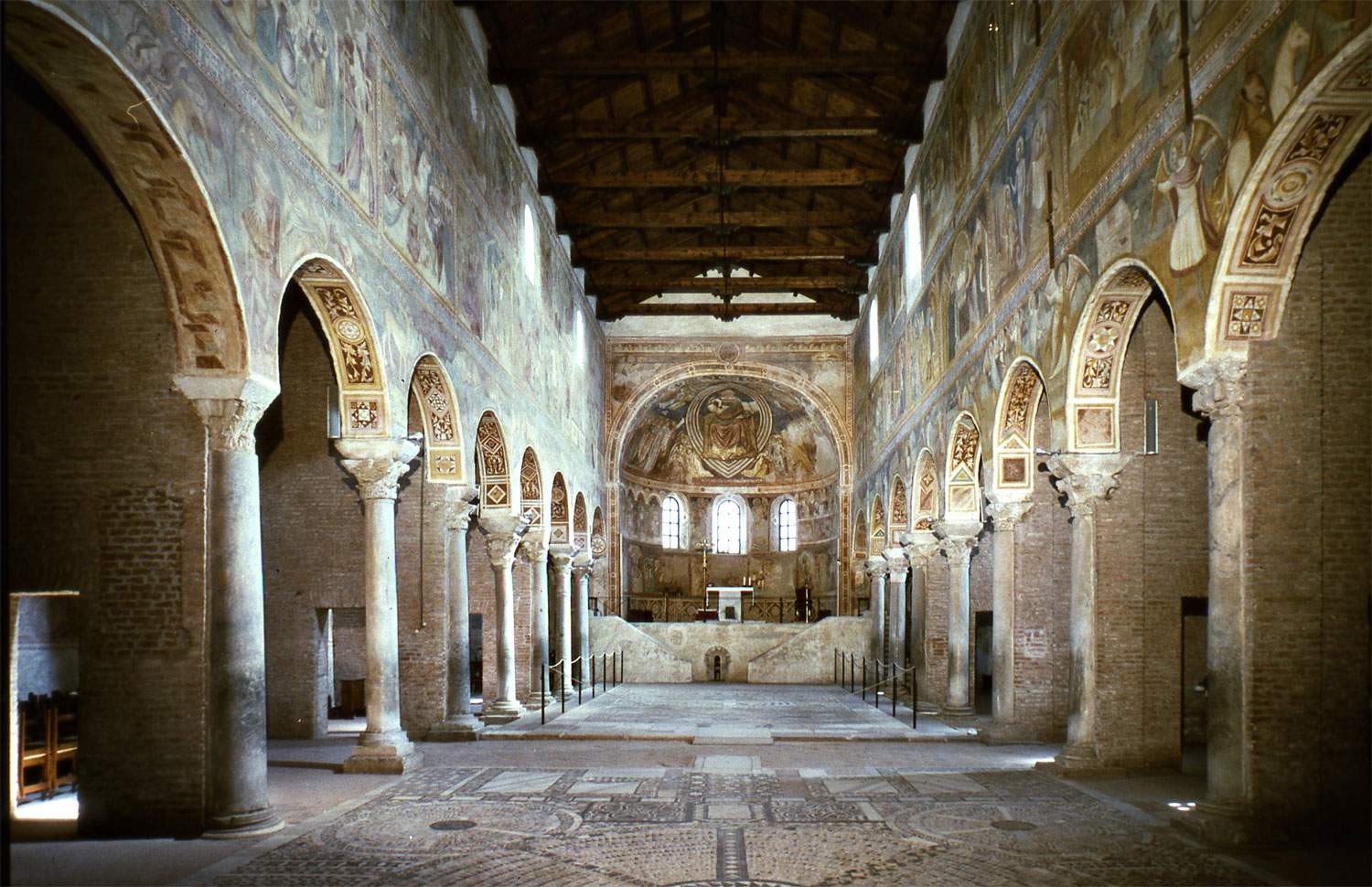
In Rosolina Mare, on the Veneto side of the Po Delta, is the Porto Caleri Botanical Garden. This green area covers about 44 hectares and its creation was desired by the Veneto Region in 1990 to conserve and preserve a unique natural environment. The garden allows visitors to walk around and touch many different scenarios with very special flora and fauna. We start with the vegetation of the sands, close to the sea, with its first dunes, while going further inland we come across the scrub of shrubs and then again the large pine forests. Of particular interest, however, is also the large equipped path within the brackish water mirrors near the Caleri lagoon.
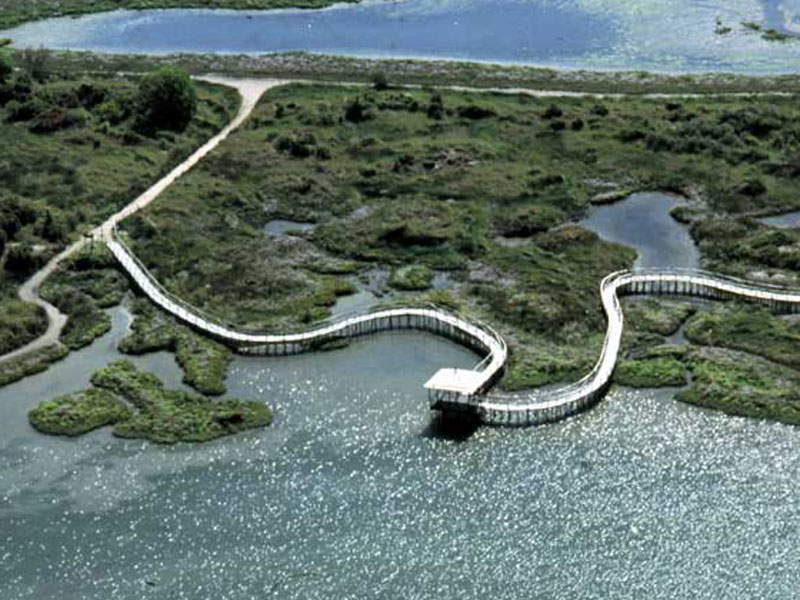
To discover the many naturalistic and cultural wonders of the Po Delta, the best way is definitely to travel it with the slow pace of the wayfarer or cyclist. There are numerous paths and roads equipped for this type of traveler throughout the area, the most famous being undoubtedly the Via delle Valli. This follows two routes, one to the north and one to the south. In the first case, one starts from Rosolina Mare and walks, or pedals, below sea level among woods, valleys and canals between the Adige and the Po di Levante; in the second, the start is set instead at in the municipality of Porto Viro for a journey to discover the slow process of land reclamation and how it changed the territory.
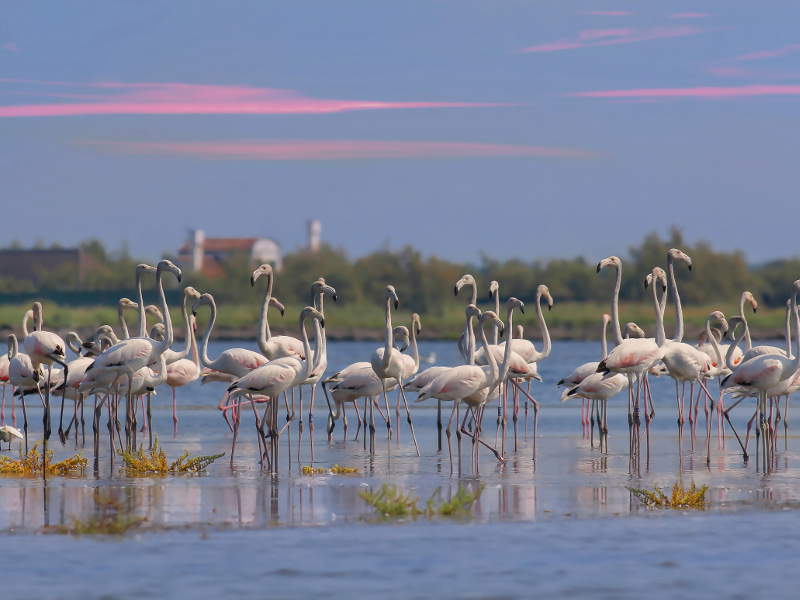
The fairy tale forest in the middle of the Po Valley. The Bosco della Mesola nature reserve covers over a thousand hectares and is now one of the last, and best preserved, lowland forests in Italy. Its trees protect a very rich fauna and represent one of the few remaining traces of the ancient forests that in past centuries were found all along the Adriatic coast. Today, the forest is home to many hiking trails within evocative landscapes and where nature in all its splendor and with close encounters with wild animals being the order of the day.
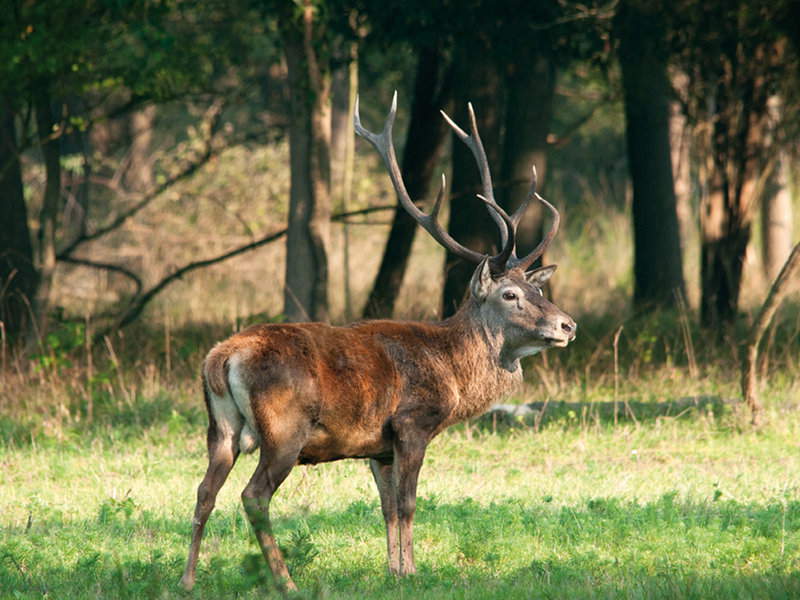
In the heart of the Municipality of Goro, the Island of Love, characterized by the presence of the famous Goro lighthouse, is formed by a tongue of sand whose dunes constantly change shape due to wind and tides. The island can only be reached by boat, and its beach is considered one of the most beautiful and unspoiled in Italy. Endowed with a wild charm, the island of Love is a unique place to enjoy a relaxing day immersed in a truly evocative scenery among the lush vegetation, the colonies of aquatic birds that have their home here and, even, the dolphins that it is not uncommon to swim a short distance from the shore.
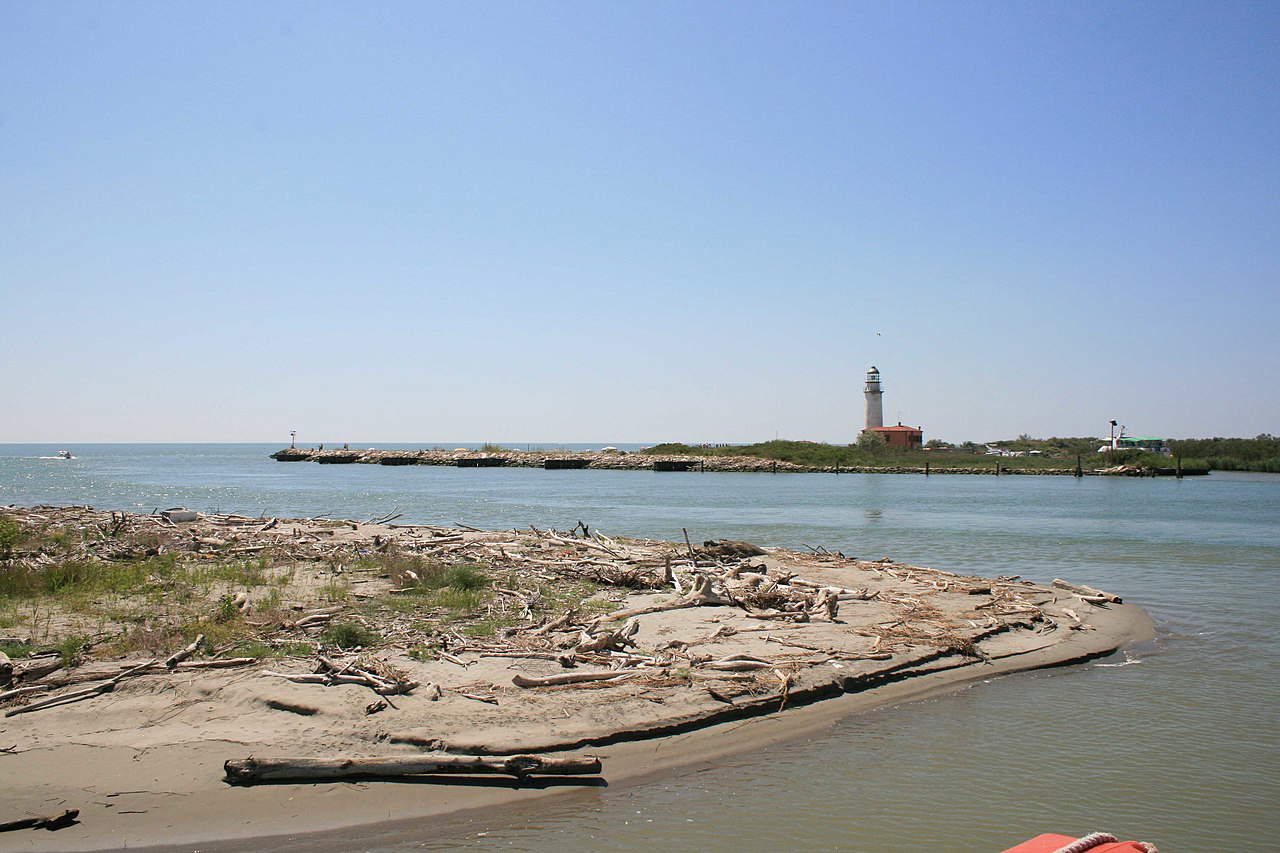
This is one of the best known and most characteristic sceneries of the entire Po delta. The Sacca degli Scardovari is located in Porto Tolle and consists of a large body of water that stretches between the mouths of the Po di Gnocca and the Po delle Tolle. This basin goes several kilometers inland and is an ideal place for the cultivation of clams, cosse and oysters. It is precisely this close relationship between water and man that has contributed decisively to shaping the landscape where one can admire the characteristic fishermen’s cavàne, houses built suspended over the water on stilts, which are one of the most recognized symbols of these lands.
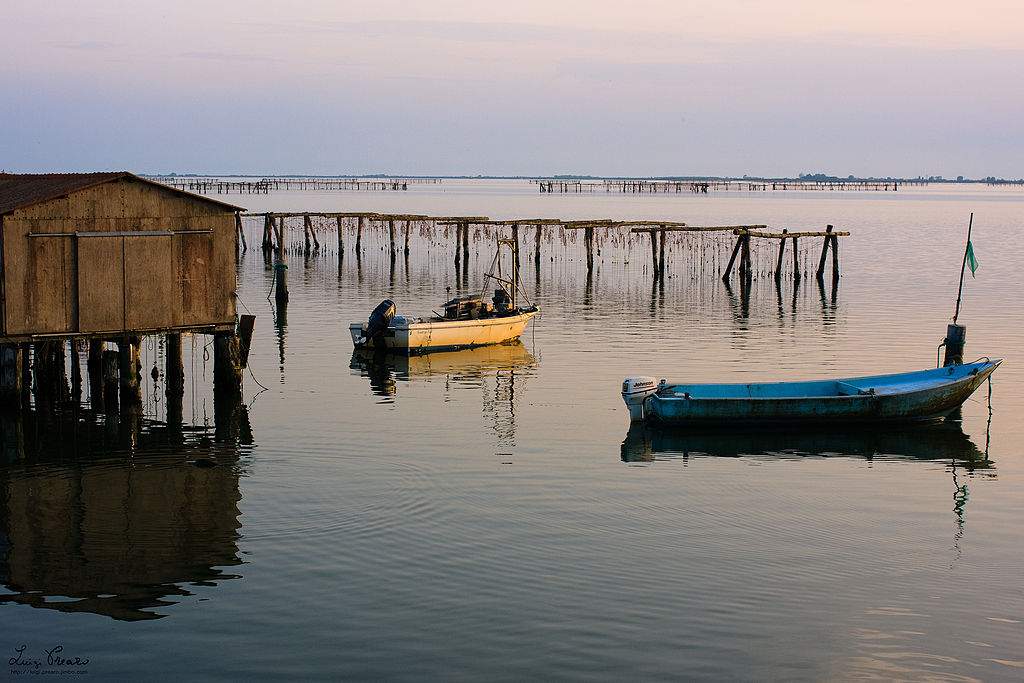
On the right bank of the Reno River and in the bed of the Po di Primaro is the beautiful parish church of San Giorgio, in Argenta. Surrounded by trees and lush nature, the pieve dates back to 569 when it was built by the then archbishop of Ravenna. Today it has a single nave with an imposing marble portal in the Romanesque style. Inside, a marble altar in Byzantine style and what remains of 12th-century frescoes stand out. The archaeological remains of the pieve are now preserved and reproduced among the Museum of the Valleys, the Argenta Civic Museum , and the archbishop’s museum in Ravenna
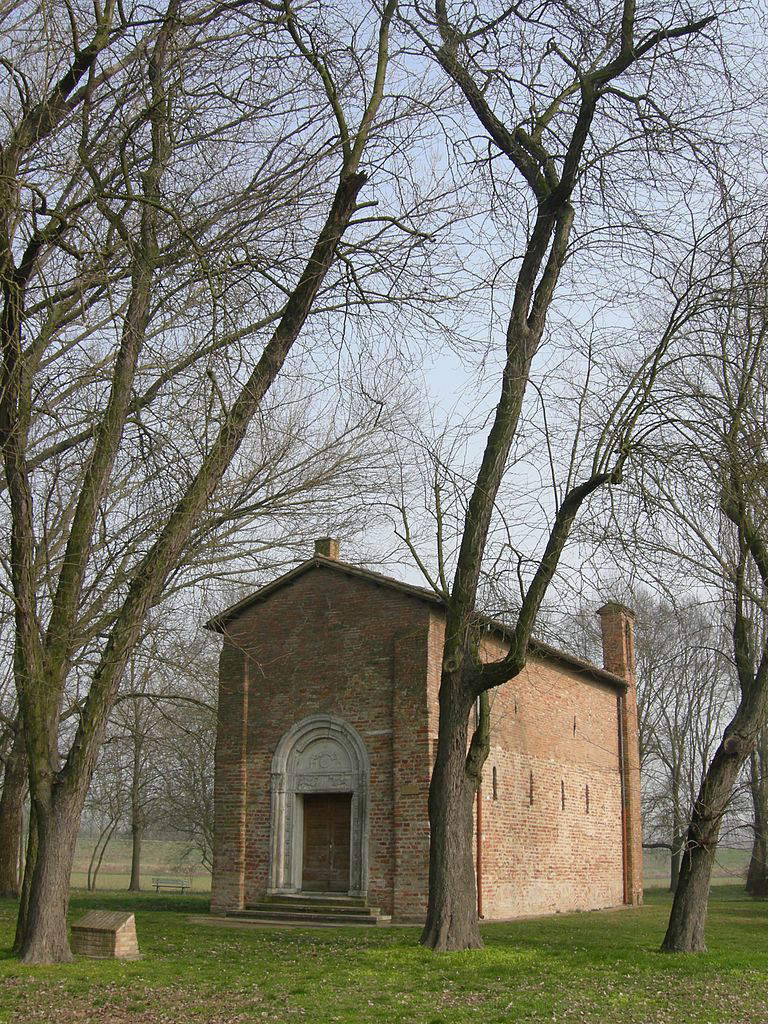
 |
| Po Delta, what to see: journey in 10 stages |
Warning: the translation into English of the original Italian article was created using automatic tools. We undertake to review all articles, but we do not guarantee the total absence of inaccuracies in the translation due to the program. You can find the original by clicking on the ITA button. If you find any mistake,please contact us.